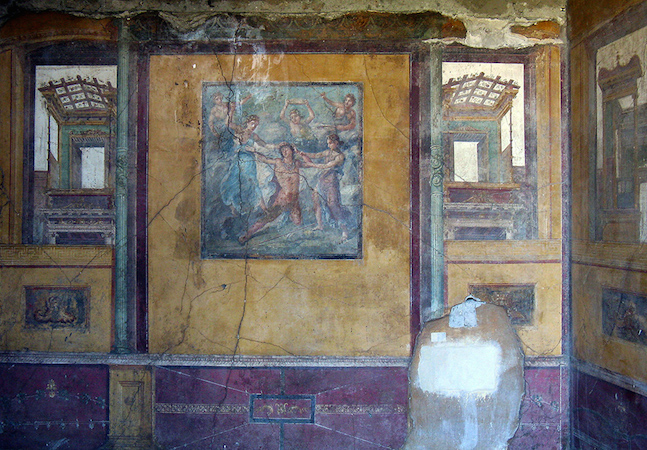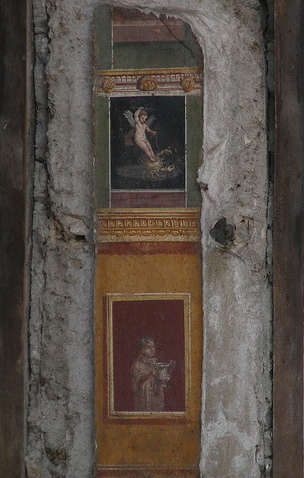Overview
Domus architecture
A house is, of course, a dwelling—but it is also a stage on which the rituals of daily life and social hierarchy would be performed. During the time of the Roman republic (fifth through first centuries B.C.E.), ranking aristocratic families (patricians) used domestic display as a way to reinforce social position and as a way to advance their own fortunes, as well as those of their dependents and clients (clientes), within the community. Since Republican society operated on the basis of this patron-client relationship, the domus played a key part in the reinforcement of social hierarchy as the patron (patronus) would receive his clients (clientes) in the atrium of his domus each business day. While visiting with the patron, each client would get an eyeful of the patron’s household wealth, thus applying implicit pressure on the patron to ensure that his house was tasteful and fashionable.
Excavation and Identification
The plan of the house
The house was built atop the remains of an earlier house that survives, in part, in the form of the wings (alae) and a doorway. The plan of the House of the Vettii has two large central halls (atria) and, significantly, lacks an office space (tablinum). Entry to the house was gained from the east by way of a vestibule that granted admission to the larger atrium. The stone-lined basin for collecting rainwater (impluvium) lies at the center of the atrium. This larger atrium communicates directly with the peristyle (an open courtyard surrounded by fluted Doric columns) by means of a set of folding doors. The smaller atrium was the focus of the service portion of the house, while the peristyle and its well-appointed rooms was meant for entertainment and dining.
Wall paintings
Candela Citations
- Pompeii: House of the Vettii. Authored by: Dr. Jeffrey A. Becker. Provided by: Khan Academy. Located at: https://www.khanacademy.org/humanities/ancient-art-civilizations/roman/wall-painting/a/pompeii-house-of-the-vettii. Project: Pompeii: House of the Vettii. License: CC BY-NC-SA: Attribution-NonCommercial-ShareAlike









